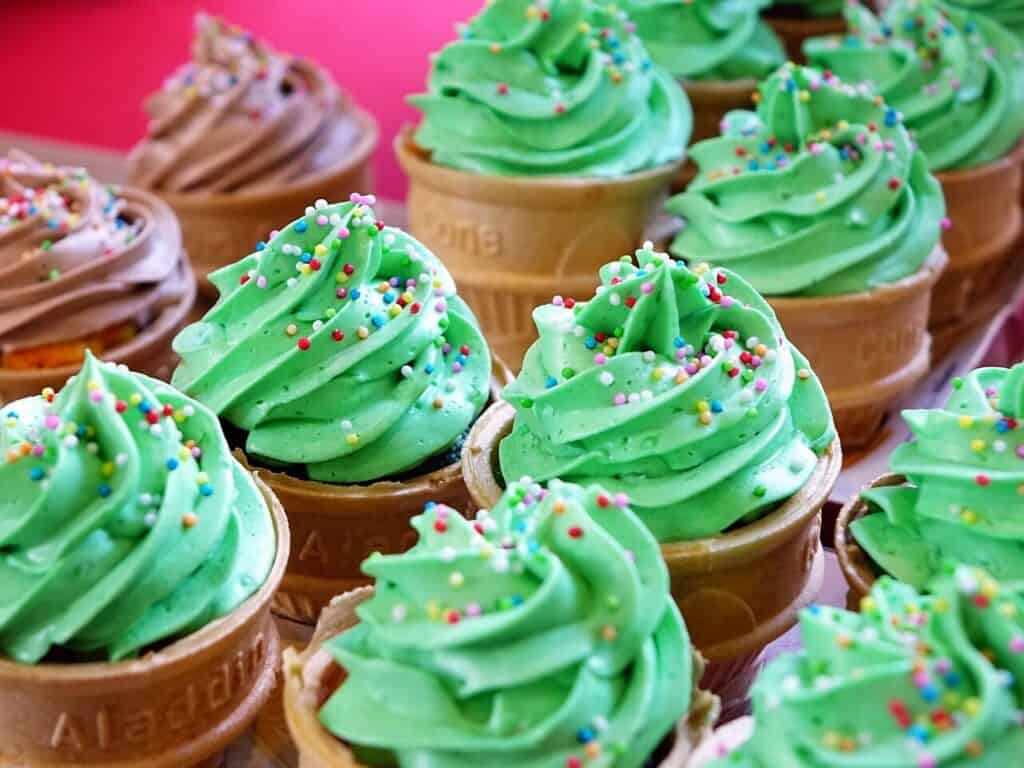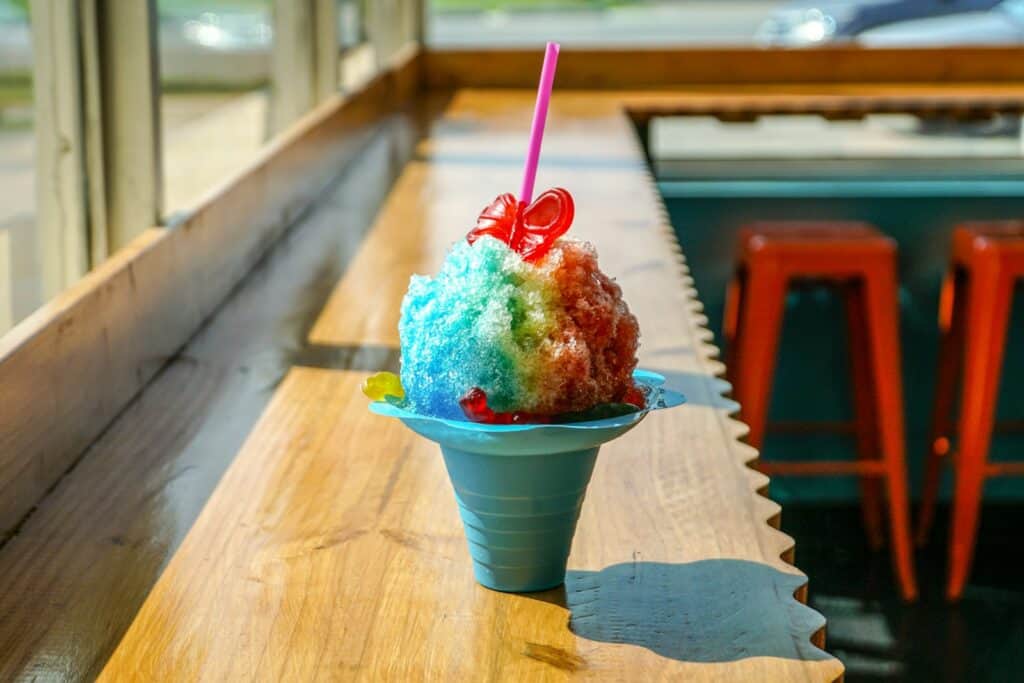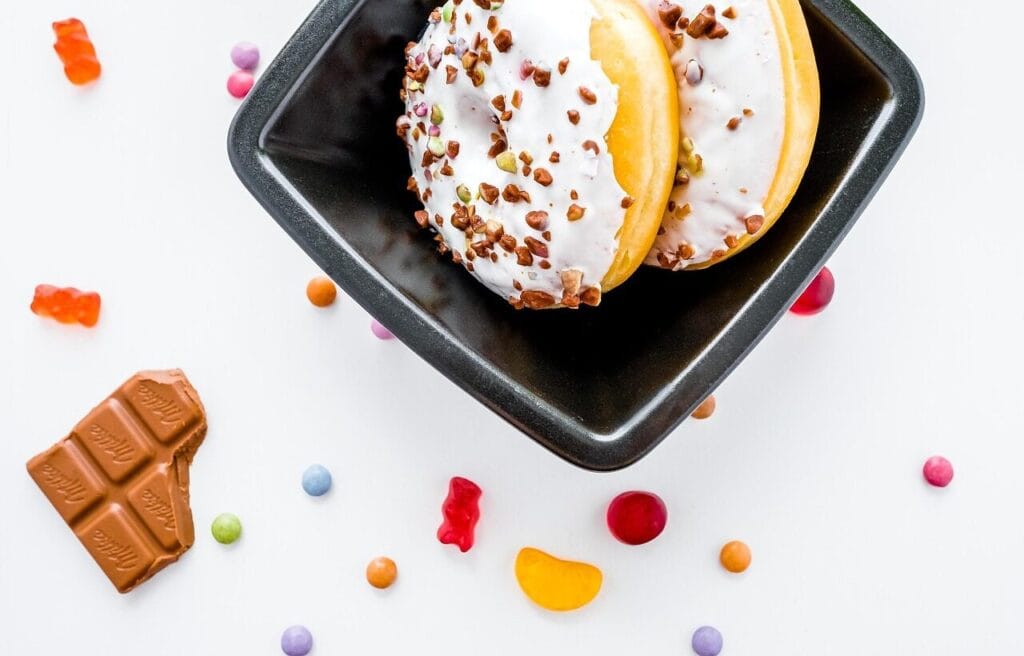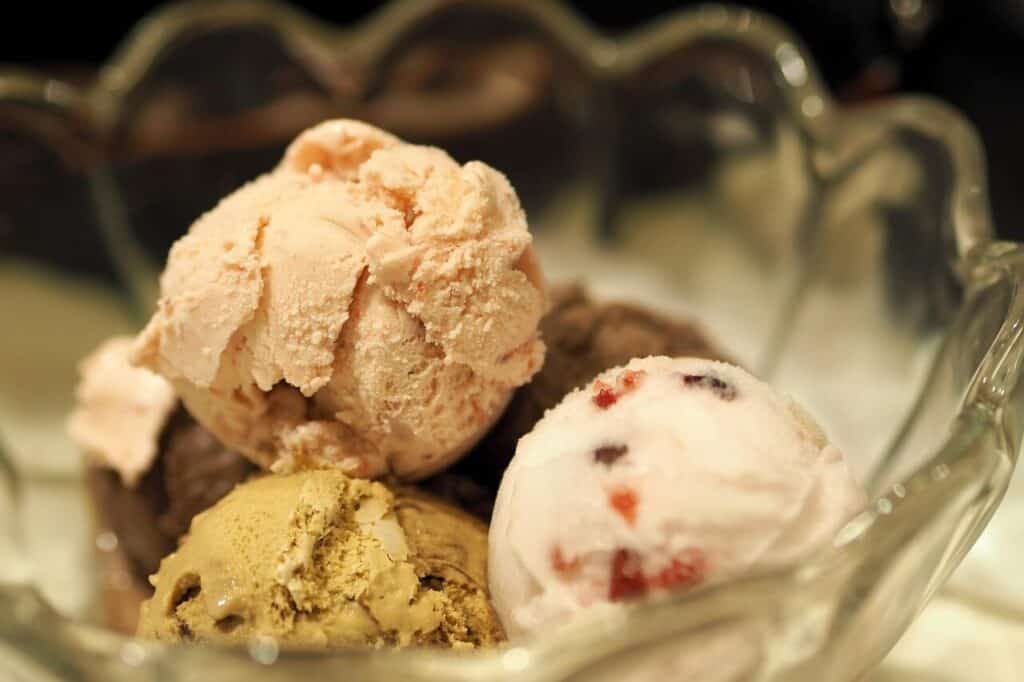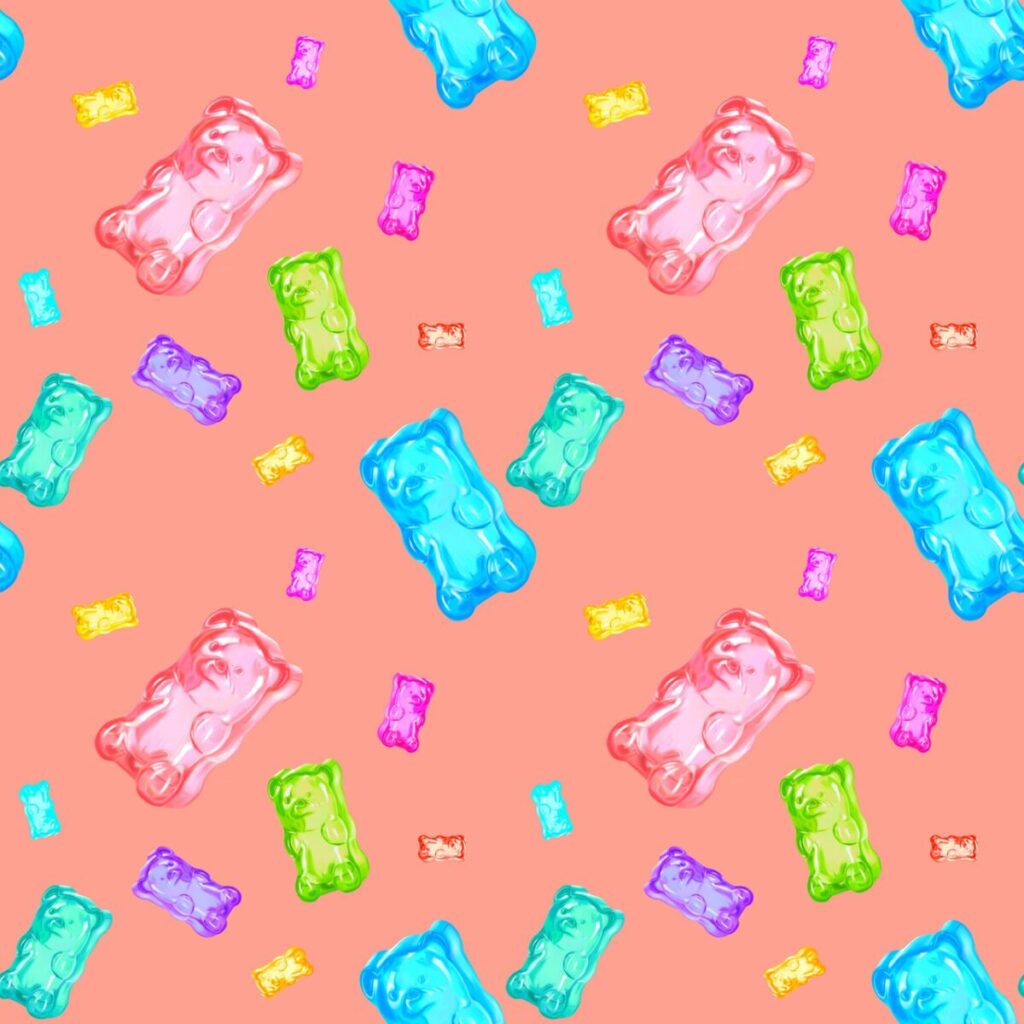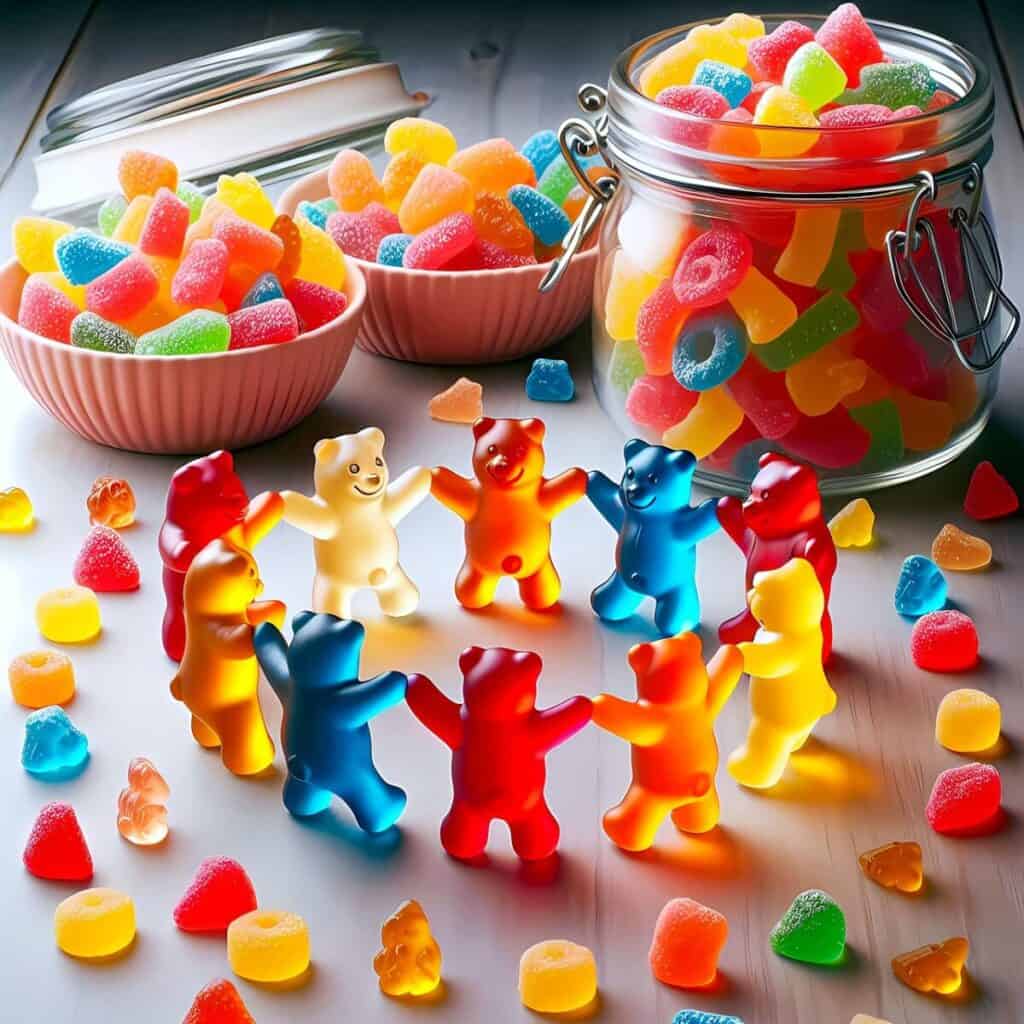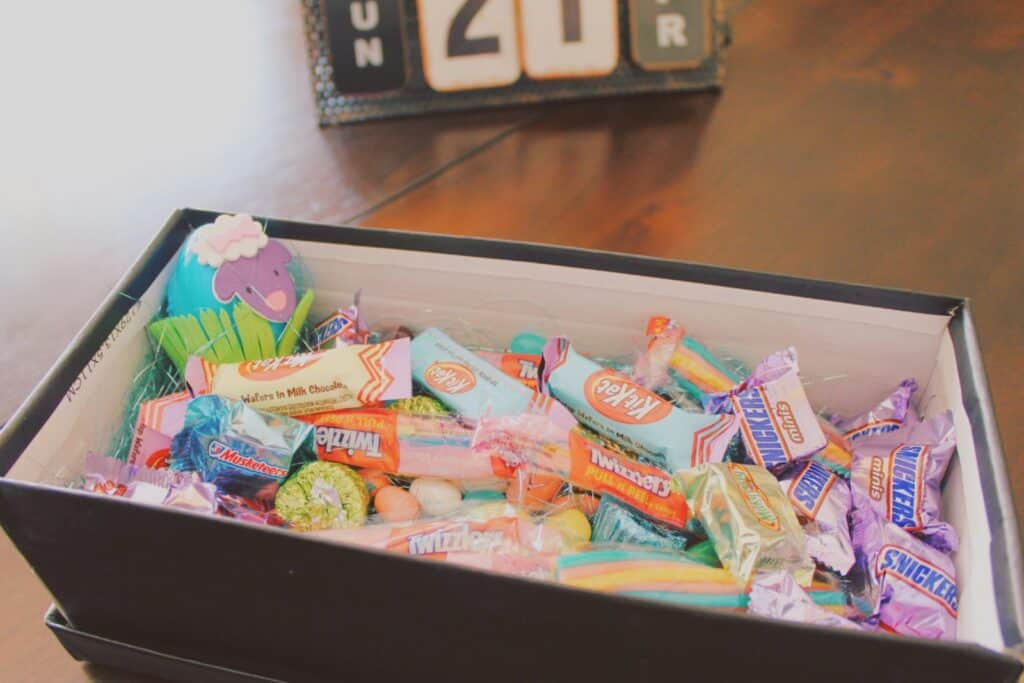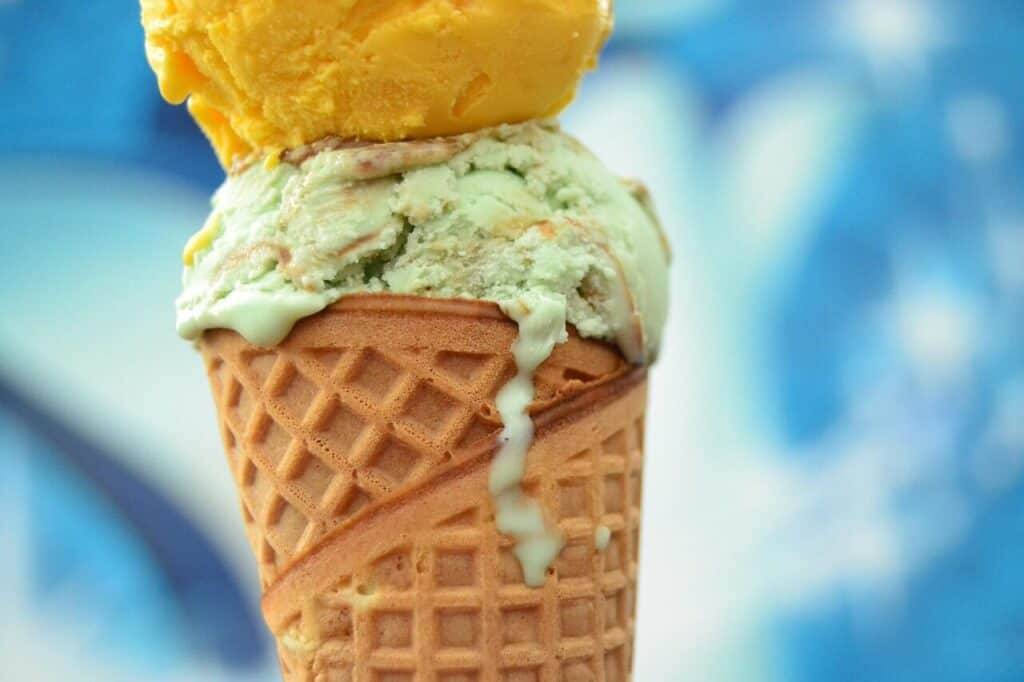La dulce ciencia: Guía técnica del helado de caramelo de goma perfectamente masticable
Ya lo ha hecho. Has batido un lote de cremoso y rico helado casero. Para darle el toque final, ha mezclado caramelos de goma de colores. Estás entusiasmado con esas maravillosas y masticables explosiones de sabor.
Lo metes en el congelador para que cuaje. Pasan las horas. Tomas la primera cucharada con ansia. El helado sabe de maravilla, pero las gominolas son un desastre. Son trozos congelados duros como piedras que podrían partirte los dientes.
Esto ocurre a menudo. No es porque tu receta haya fallado. Es un resultado predecible basado en la ciencia de los alimentos. Cuando las gominolas los caramelos se endurecen en el helado, todo depende de la humedad y la temperatura.
¿La buena noticia? Hay una solución clara. Este guía explica por qué se congelan las gominolas sólidas. También le ofrece métodos prácticos para mantener las gominolas suaves y masticables en cada cucharada.
La ciencia de las gominolas congeladas
Para solucionar este problema, tenemos que entender qué está pasando. Una gominola blanda se convierte en un trozo duro debido a dos fuerzas científicas principales que trabajan en su contra en el congelador.
Migración del agua y cristalización
El primer problema es la ósmosis. Piensa que la naturaleza intenta crear un equilibrio.
Su helado tiene mucha agua. Gominolas caramelo tiene mucha menos agua por diseño. Esto crea una gran diferencia. El helado tiene una elevada actividad de agua (alrededor de 0,96). Los caramelos de goma tienen una actividad acuosa mucho menor (cerca de 0,75).
Debido a este desequilibrio, el agua pasa del helado al caramelo de goma. El agua quiere igualar la diferencia.
Cuando congelas el helado, esta nueva agua del interior de la gominola también se congela. No sólo se enfría. Forma cristales de hielo grandes y afilados que se expanden y rompen la delicada estructura. Esto destruye por completo la masticabilidad de la gominola y la vuelve dura y helada.
Transición vítrea y textura
Hay otro principio científico en juego: La temperatura de transición vítrea (Tg).
Todo sólido no cristalino tiene una Tg. Esto incluye el azúcar y gelatina en gominolas. La Tg es la temperatura exacta a la que el material pasa de ser blando y flexible a duro y quebradizo.
Imagínese una manguera de goma en un día caluroso. Es flexible y fácil de doblar. Ahora imagínese esa misma manguera en un frío invierno. Se vuelve rígida y quebradiza. Puede agrietarse fácilmente. La manguera ha descendido por debajo de su temperatura de transición vítrea.
Los caramelos de goma estándar tienen una Tg muy por encima de las temperaturas de congelación normales (alrededor de -18 °C o 0 °F). Cuando se meten gominolas en helado y se congelan, se las lleva muy por debajo de su Tg. La estructura de la gominola se bloquea. Se vuelve dura y vidriosa. Esto ocurre incluso sin el agua adicional de la ósmosis.
Imagínese un gráfico de temperaturas. Por encima de la línea Tg, la gominola permanece en su “estado gomoso” (masticable). Por debajo de la línea Tg, entra en el “estado vítreo” (dura y quebradiza). El congelador la obliga a entrar en el estado vítreo.
Deconstruir la gominola
No todos los caramelos de goma funcionan de la misma manera. Su comportamiento en el helado depende de sus ingredientes principales. Esto incluye el agente gelificante y los tipos de azúcares utilizados. Entender estas partes le ayudará a elegir o modificar gominolas para helados.
Gelatina frente a pectina
El ingrediente que da a las gominolas su estructura es el gelificante. Suele ser gelatina o pectina.
- Gelatina: Procede de la proteína animal. Crea el clásico “chicle” elástico y duradero que se encuentra en los ositos de gominola. Por desgracia, su estructura proteínica se vuelve muy dura y firme a bajas temperaturas.
- Pectina: Procede de hidratos de carbono vegetales, como las manzanas y los cítricos. La pectina crea una textura diferente. Tiene un bocado “más corto” con un chasquido limpio, como las gelatinas de frutas. Las gominolas a base de pectina funcionan ligeramente mejor cuando se congelan. Su estructura no es tan dura como la de la gelatina, aunque se endurecen un poco.
El papel de los azúcares
Azúcares en las gominolas hacen algo más que añadir dulzor. Son ingredientes cruciales que controlan la textura y la actividad del agua.
Los principales azúcares son la sacarosa (azúcar de mesa), el jarabe de glucosa (jarabe de maíz) y, a veces, el azúcar invertido.
Estas diferentes moléculas de azúcar trabajan juntas. Impiden que la sacarosa cristalice, lo que haría que la textura fuera granulada.
Una mayor cantidad de jarabe de glucosa o azúcar invertido ayuda a nuestra causa. Estos azúcares son mejores para detener todos los tipos de cristalización (tanto del azúcar como del hielo). También ayudan a bajar el punto de congelación general de la gominola. Esto nos da una pista crucial para nuestras soluciones.
Cómo conseguir gomitas blandas en los helados
Ahora que entendemos la ciencia, podemos crear soluciones claras y eficaces. Estos métodos funcionan combatiendo la migración de agua y los efectos de la temperatura de transición vítrea.
Método 1: Punto de congelación más bajo
Este método utiliza la depresión del punto de congelación. Añadiendo sólidos disueltos específicos a la gominola, podemos bajar la temperatura a la que el agua se congela formando cristales duros.
El remojo con alcohol:
Sumergir las gominolas en bebidas alcohólicas de baja graduación, como el vodka o el ron, funciona muy bien. El alcohol tiene un punto de congelación muy bajo (-114 °C). Cuando empapa la gominola, impide que el agua se congele. De este modo, la gominola se mantiene flexible.
Pon las gominolas en un cuenco. Vierte suficiente alcohol para cubrirlas. Déjalas en remojo durante al menos una hora, o hasta ocho horas para efectos más fuertes. Escúrrelas bien antes de usarlas. En nuestras pruebas, las gominolas empapadas en vodka mantuvieron el “rebote” y la masticación más auténticos.
El remojo en sirope simple:
Para una opción sin alcohol, utilice sirope simple concentrado. Funciona según el mismo principio. La alta concentración de el azúcar interfiere con el cristal de hielo formación.
Prepare un jarabe simple 2:1. Disolver dos partes de azúcar en una parte de agua a fuego lento. Déjelo enfriar completamente. Remoje las gominolas en este sirope espeso durante 2-4 horas. Después, escúrralas bien. Las gominolas remojadas en almíbar adquieren una textura masticable suave y ligeramente más densa. Añadirán un dulzor extra al producto final.
Método 2: Crear una barrera contra la humedad
Esta técnica aborda directamente la migración del agua (ósmosis). Al recubrir la gominola de grasa, creamos una barrera que repele el agua. Este sello impide que el agua del helado penetre en la gominola.
Las mejores grasas son las sólidas a temperatura ambiente. Derrite una pequeña cantidad de aceite de coco refinado o manteca de cacao hasta que esté líquida.
Mezcle las gominolas en la grasa derretida ligeramente enfriada. Debe cubrirlas ligeramente. Necesita una capa fina, casi invisible, no una cáscara gruesa.
Extienda las gominolas recubiertas en una bandeja forrada con papel pergamino. Enfríelas en el frigorífico durante 15-20 minutos. Esto endurece la grasa y establece la barrera protectora antes de mezclarlas con el helado.
Método 3: Elegir la gominola adecuada
Lo más sencillo es empezar con gominolas que funcionan mejor congeladas. Para ello, hay que leer atentamente las etiquetas de los ingredientes. Aplicar lo aprendido sobre gelificantes y azúcares.
Busque gominolas que incluyan pectina como principal agente gelificante en lugar de gelatina. Se mantienen más blandas de forma natural.
Compruebe también la lista de azúcares. Las gominolas que incluyen jarabe de maíz, jarabe de glucosa o azúcar invertido antes de la sacarosa suelen ser mejores opciones. Esto indica una fórmula diseñada para resistir la cristalización.
Para los fabricantes más ambiciosos, la solución definitiva es hacer gominolas personalizadas y congelables desde cero. Las recetas para este fin utilizan una alta proporción de jarabe de glucosa y otros ingredientes. Crean gominolas con una temperatura de transición vítrea naturalmente muy baja.
Análisis comparativo de métodos
He aquí una comparación directa de los tres métodos principales para ayudarle a elegir el mejor enfoque.
Método | Principio científico | Lo mejor para... | Posibles inconvenientes | Textura Resultado |
Remojo en alcohol | Depresión del punto de congelación | Helado sólo para adultos, máxima retención de la textura | Añade sabor a alcohol, no apto para niños | Muy masticable, con rebote |
Jarabe de remojo | Depresión del punto de congelación | Aplicaciones para niños, que añaden dulzura | Puede hacer que el helado sea notablemente más dulce | Suave, ligeramente denso |
Recubrimiento de aceite | Barrera antihumedad | Conservando el sabor original de la gominola, apta para niños | Puede añadir una ligera sensación grasa en la boca si se aplica en exceso | Masticable, ligeramente firme |
Selección de gominolas | Optimización de ingredientes | Sencillez, buenos resultados con el mínimo esfuerzo | Requiere buscar productos específicos | Varía, pero en general es mejor que las gomitas sin tratar |
Formulación y procesos avanzados
Para conseguir un helado de caramelo de goma de calidad verdaderamente profesional, mire más allá del tratamiento de la gominola. Considere todo el sistema. Optimizar la base de helado y el proceso de mezcla es el último paso hacia la maestría.
Optimizar su base de helado
Puedes hacer una base de helado que sea más “amigable” con todos los mix-ins, incluidas las gominolas.
Estabilizadores como la goma guar o la goma xantana ayudan a controlar el agua libre y no ligada en la base del helado. Al ligar esta agua, los estabilizantes reducen la fuerza que impulsa la migración del agua a las gominolas.
Utilizar una mezcla de azúcares en la propia base también ayuda. Sustituya parte de la sacarosa por jarabe de maíz o dextrosa. Esto reduce el punto de congelación de todo el helado. El resultado es un producto más suave, más fácil de tomar y menos agresivo con los ingredientes.
El proceso de incorporación
El momento y la forma de añadir las gominolas son importantes. La regla de oro es añadir las gominolas pretratadas al final del batido.
Bata la base de helado hasta que adquiera una consistencia espesa y suave. En los últimos 30 a 60 segundos de batido, añada las gominolas frías.
Este tiempo mínimo de batido las reparte uniformemente sin triturarlas con la batidora. Una vez intentamos añadir gominolas a los cinco minutos de batir. El resultado fueron gominolas trituradas y una base de un color extraño. No quedaron trozos masticables satisfactorios.
Añadirlos fríos también ayuda a mantener la temperatura del helado. Así se consigue una congelación más rápida y cristales de hielo más pequeños en el producto final.
Conclusiones: Alcanzar la maestría
Las gominolas duras como piedras en los helados caseros frustran a cualquiera. Pero es un problema con una explicación científica clara. La migración del agua y la temperatura de transición vítrea de la gominola causan el problema.
Al entender el “por qué”, ya no te limitas a seguir una receta. Estás controlando el resultado.
Ahora puede utilizar con confianza una de las tres soluciones básicas. Bajar el punto de congelación de la gominola con un remojo. Cree una barrera protectora contra la humedad con un recubrimiento de grasa. O seleccione una gominola con mejores ingredientes.
Con estos conocimientos, has pasado de la frustración al dominio de la ciencia de los alimentos. Ahora estás totalmente equipado para crear deliciosos helados de caramelo de goma de calidad profesional. Cada lote tendrá el textura suave y masticable.
Enlaces de referencia:
- Fenómenos de transición vítrea y recristalización de materiales congelados y su efecto en la calidad de los alimentos congelados - PMC (NIH) https://pmc.ncbi.nlm.nih.gov/articles/PMC7923164/
- Temperatura de transición vítrea y su relevancia en el procesado de alimentos - PubMed https://pubmed.ncbi.nlm.nih.gov/22129345/
- La influencia de los polisacáridos en la transición vítrea en soluciones congeladas de sacarosa y helados - ScienceDirect https://www.sciencedirect.com/science/article/pii/S0022030293774561
- Transiciones vítreas afectadas por la composición de los alimentos y por tecnologías de congelación convencionales y novedosas: Una revisión - ScienceDirect https://www.sciencedirect.com/science/article/abs/pii/S092422441930370X
- Deshidratación osmótica de frutas y verduras: una revisión - PMC https://pmc.ncbi.nlm.nih.gov/articles/PMC4152536/
- Exploración de la deshidratación osmótica para la conservación de alimentos: Métodos, modelos y aplicaciones modernas - PMC https://pmc.ncbi.nlm.nih.gov/articles/PMC11394940/
- Revisión de la deshidratación osmótica: Tecnologías prometedoras para mejorar los atributos de los productos - Wiley Online Library https://ift.onlinelibrary.wiley.com/doi/10.1111/1541-4337.13346
- Deshidratación osmótica - ScienceDirect Topics https://www.sciencedirect.com/topics/agricultural-and-biological-sciences/osmotic-dehydration
- Conservación de alimentos - Wikipedia https://en.wikipedia.org/wiki/Food_preservation
- Funciones de conservación y propiedades físicas del sodio en los alimentos - NCBI Bookshelf https://www.ncbi.nlm.nih.gov/books/NBK50952/

